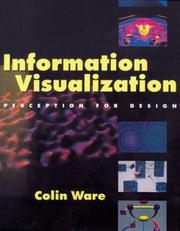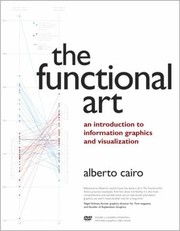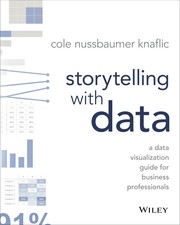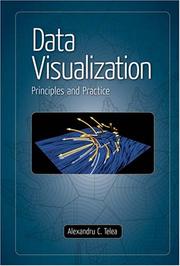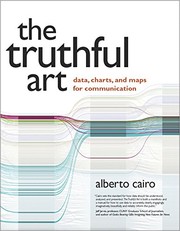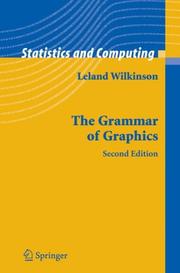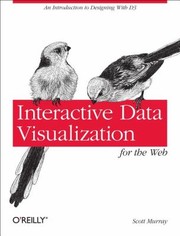Are you looking to enhance your understanding of visualization and its impact on our lives? Look no further! We have curated a list of the 20 best books about visualization that are sure to enlighten and inspire you. Whether you’re a beginner or an expert in the field, these books offer valuable insights, practical techniques, and captivating narratives. From the power of visual storytelling to the science behind visual perception, each book on visualization on this list provides a unique perspective. Join us as we delve into the world of visualization books and discover the beauty and significance of visual communication.
Contents
- 1 20 Best Visualization Books
- 2 The Visual Display of Quantitative Information
- 3 Information Visualization: Perception for Design
- 4 Visual Explanations: Images and Quantities, Evidence and Narrative
- 5 Data Visualization: A Practical Introduction
- 6 The Wall Street Journal Guide to Information Graphics
- 7 Visualizing Data: Exploring and Explaining Data with the Processing Environment
- 8 The Functional Art: An Introduction to Information Graphics and Visualization
- 9 Storytelling with Data: A Data Visualization Guide for Business Professionals
- 10 Visual Thinking: for Design
- 11 Data Visualization: Principles and Practice
- 12 Visual Complexity: Mapping Patterns of Information
- 13 The Truthful Art: Data, Charts, and Maps for Communication
- 14 Design for Information: An Introduction to the Histories, Theories, and Best Practices Behind Effective Information Visualizations
- 15 Visual Analytics for Management: Translational Science and Applications in Practice
- 16 The Grammar of Graphics
- 17 Data Visualization: A Handbook for Data Driven Design
- 18 The Book of Trees: Visualizing Branches of Knowledge
- 19 Now You See It: Simple Visualization Techniques for Quantitative Analysis
- 20 Interactive Data Visualization for the Web
- 21 The Big Book of Dashboards: Visualizing Your Data Using Real-World Business Scenarios
- 22 Final Thoughts on Best Visualization Books
- 23
20 Best Visualization Books
The Visual Display of Quantitative Information
by Edward R. Tufte
The Visual Display of Quantitative Information, written by Edward R. Tufte, is a groundbreaking book on visualization that explores the art and science of presenting data in a visually compelling and informative manner. Tufte’s book about visualization challenges the conventional wisdom of chart design and introduces revolutionary concepts that have influenced the field of data visualization for decades. Through an engaging and insightful analysis, Tufte demonstrates the power of effective visual communication and provides practical guidance on how to create clear, impactful graphics that convey complex information with precision and clarity. This visualization book is a must-read for anyone interested in the intersection of design, statistics, and communication, as it offers a comprehensive framework for understanding and creating compelling visual displays of quantitative data. With its rich examples and thought-provoking insights, The Visual Display of Quantitative Information remains an essential resource for anyone seeking to master the art of visual storytelling through data.
Information Visualization: Perception for Design
by Colin Ware
Information Visualization: Perception for Design by Colin Ware is a comprehensive and insightful book on visualization that delves into the principles of perception and design. Ware, an expert in the field, explores the cognitive processes behind how humans perceive and interpret visual information, and provides valuable insights for designing effective visualizations that effectively communicate data and information.
Through a blend of scientific research and practical examples, this visualization book offers a deep understanding of the visual perception process and how it can be leveraged to create more intuitive and impactful visualizations. Whether you’re a designer, data scientist, or simply interested in the art and science of visual representation, this book about visualization is a must-read for anyone looking to enhance their understanding of how to effectively present information visually.
With its engaging and accessible writing style, Information Visualization: Perception for Design is an essential resource for anyone seeking to master the art of visual communication.
Visual Explanations: Images and Quantities, Evidence and Narrative
by Edward R. Tufte
Visual Explanations: Images and Quantities, Evidence and Narrative by Edward R. Tufte is a captivating exploration of the power of visual communication. This book on visualization delves into the intricate art of presenting complex information through images, charts, and diagrams. Tufte masterfully dissects various visual explanations, uncovering the techniques and principles that make them effective or flawed.
Through compelling examples and thorough analysis, Tufte demonstrates how visual representations can enhance understanding, facilitate decision-making, and convey compelling narratives. He emphasizes the importance of clarity, precision, and integrity in visual communication, urging readers to critically evaluate the information presented to them.
With its rich insights and thought-provoking perspectives, Visual Explanations is an essential read for anyone interested in the art and science of visual storytelling. Tufte’s meticulous attention to detail and his passion for the subject make this visualization book a treasure trove of knowledge for designers, communicators, educators, and anyone seeking to harness the power of visual communication.
Data Visualization: A Practical Introduction
by Kieran Healy
Data Visualization: A Practical Introduction by Kieran Healy is a comprehensive and accessible book on visualization that provides readers with a practical and hands-on introduction to the art and science of presenting data in graphical form. Healy, a sociology professor and data visualization expert, presents a clear and engaging overview of the principles and techniques behind effective data visualization, making it an essential resource for anyone looking to improve their skills in this increasingly important field.
Readers can expect to learn about the best practices for creating compelling visualizations, as well as the common pitfalls to avoid when working with data. The book covers a wide range of visualization tools and techniques, and includes practical examples and exercises to help readers apply what they’ve learned. Whether you’re a beginner looking to get started with data visualization or a seasoned pro looking to refine your skills, Data Visualization: A Practical Introduction is a must-read for anyone interested in effectively communicating data through visual means.
The Wall Street Journal Guide to Information Graphics
by Dona M. Wong
The Wall Street Journal Guide to Information Graphics by Dona M. Wong is a comprehensive book about visualization. It provides a valuable resource for anyone looking to create impactful and informative graphics. Wong, a former graphics director at The Wall Street Journal, shares her expertise in this easy-to-follow guide, offering practical tips and techniques for designing effective visual representations of data. The book covers topics such as chart types, color choices, and layout design, making it a valuable resource for both beginners and experienced professionals. With clear explanations and real-world examples, this visualization book is an essential tool for anyone looking to improve their data visualization skills. Whether you’re a journalist, designer, or business professional, The Wall Street Journal Guide to Information Graphics is a must-read for anyone looking to create compelling and informative visualizations.
Visualizing Data: Exploring and Explaining Data with the Processing Environment
by Ben Fry
Visualizing Data: Exploring and Explaining Data with the Processing Environment by Ben Fry is a comprehensive guide for anyone interested in data visualization. This book provides a detailed exploration of the principles and techniques behind creating effective visual representations of data. Through the use of the Processing environment, Fry offers practical examples and exercises that demonstrate how to create compelling visualizations that effectively communicate complex data sets. This book on visualization covers a wide range of topics, including data manipulation, visualization design, and interactive graphics, making it a valuable resource for both beginners and experienced practitioners in the field of data visualization.
The Functional Art: An Introduction to Information Graphics and Visualization
by Alberto Cairo
The Functional Art: An Introduction to Information Graphics and Visualization by Alberto Cairo is a captivating book about visualization that explores the intersection of art and data. Cairo, an acclaimed data visualization expert, delves into the principles and techniques of creating compelling and informative visual representations of information. Through a combination of theory and practical examples, the book highlights the essential role of visualization in modern communication and decision-making.
Cairo’s engaging writing style and insightful analysis make The Functional Art a must-read for anyone interested in the power of visual storytelling. Whether you’re a designer, journalist, or data analyst, this visualization book provides valuable insights into the art and science of transforming complex data into clear, engaging visuals. With a focus on the functional aspect of visualization, Cairo emphasizes the importance of creating visualizations that are not only visually appealing but also serve a specific purpose. Overall, The Functional Art is an essential resource for anyone looking to master the art of information graphics and visualization.
Storytelling with Data: A Data Visualization Guide for Business Professionals
by Cole Nussbaumer Knaflic
Storytelling with Data: A Data Visualization Guide for Business Professionals by Cole Nussbaumer Knaflic is a must-read for anyone looking to improve their data visualization skills. This engaging and practical book on visualization provides a comprehensive guide to creating impactful and effective data visualizations that tell a compelling story.
Knaflic’s book about visualization emphasizes the importance of combining data with narrative to effectively communicate insights and drive decision-making. She provides valuable insights on how to choose the right visual format, design thoughtful and clear graphics, and effectively communicate data to diverse audiences.
Whether you’re a data analyst, business professional, or anyone who works with data, this visualization book is a valuable resource for enhancing your ability to convey complex information in a clear and engaging manner. Through real-world examples and practical advice, Knaflic empowers readers to become better storytellers with data, ultimately leading to more informed and impactful decision-making within their organizations.
Visual Thinking: for Design
by Colin Ware
Visual Thinking: for Design by Colin Ware is a comprehensive and insightful book on visualization. Ware, a renowned expert in the field of visual perception and information visualization, delves into the complex world of visual thinking and its application in design. The book is a treasure trove of knowledge for designers, artists, and anyone interested in understanding the power of visual communication.
With a blend of scientific research and practical examples, Ware explores the cognitive processes behind visual thinking and how it influences design decisions. From the anatomy of the human eye to the psychology of color and form, the book offers a deep dive into the principles of visual perception and cognition.
Readers will gain valuable insights into how to create more effective and impactful visual designs, whether it’s for graphic design, user interface, or data visualization. Visual Thinking: for Design is a must-read for anyone looking to enhance their understanding of visual communication and harness the power of visual thinking in their creative endeavors.
Data Visualization: Principles and Practice
by Alexandru C. Telea
Data Visualization: Principles and Practice by Alexandru C. Telea is an essential guide for anyone interested in the world of visualizing data. This comprehensive book on visualization explores the fundamental principles and advanced techniques of creating effective and impactful visual representations of data. Through clear and concise explanations, the author delves into the art and science of visualization, providing readers with a deep understanding of the principles behind creating compelling visualizations.
Readers will gain valuable insights into the process of transforming complex data into meaningful and easily digestible visual forms. The book covers a wide range of topics, including data mapping, visual perception, interaction techniques, and the use of color and typography. With a focus on practical applications, this visualization book is a valuable resource for professionals and students in fields such as data science, computer graphics, and information visualization. Whether you’re a beginner or an experienced practitioner, Data Visualization: Principles and Practice offers a wealth of knowledge and practical guidance to help you master the art of visual storytelling with data.
Visual Complexity: Mapping Patterns of Information
by Manuel Lima
Visual Complexity: Mapping Patterns of Information by Manuel Lima is a captivating exploration of the intricate world of data visualization. This book delves into the beauty and complexity of visualizing information through a rich collection of images and diagrams. Lima takes readers on a journey through the history of visualization, showcasing how different cultures and disciplines have used visual representations to make sense of complex data.
As a leading expert in the field, Lima provides an in-depth analysis of various visualization techniques and patterns, shedding light on the power of visual representations in understanding the world around us. Through stunning examples and insightful commentary, Visual Complexity offers a comprehensive overview of the diverse approaches to visualizing data, making it a must-read for anyone interested in the art and science of visual communication.
Whether you’re a designer, scientist, or simply curious about the ways in which we can make sense of the world through visual means, this book about visualization will inspire and enlighten you with its rich tapestry of visual representations.
The Truthful Art: Data, Charts, and Maps for Communication
by Alberto Cairo
The Truthful Art: Data, Charts, and Maps for Communication by Alberto Cairo is a comprehensive and insightful book on visualization. With a blend of practical advice and theoretical concepts, Cairo presents a compelling argument for the importance of accurate and effective data representation. The book delves into the principles of visual communication, offering practical guidance on how to create clear and impactful charts, graphs, and maps. Cairo’s emphasis on truthful representation of data is a refreshing take on the often misleading world of visual communication. Through engaging examples and case studies, he demonstrates how visualizations can be used to inform, persuade, and even entertain. Whether you’re a seasoned data analyst or a newcomer to the field, this book about visualization is a valuable resource for anyone looking to improve their skills in data visualization and effectively communicate insights to a wider audience.
Design for Information: An Introduction to the Histories, Theories, and Best Practices Behind Effective Information Visualizations
by Isabel Meirelles
Design for Information by Isabel Meirelles is a comprehensive book about visualization that explores the histories, theories, and best practices behind effective information visualizations. Meirelles delves into the world of visual communication, providing readers with a thorough understanding of how to design and present complex information in a visually compelling manner.
The book covers a wide range of topics, from the fundamentals of visual perception to the principles of graphic design and the use of technology in information visualization. Meirelles also examines the ethical and social implications of visualizing data, making this book a valuable resource for anyone interested in the intersection of design, technology, and communication.
With its engaging writing style and rich illustrations, Design for Information is an essential book on visualization for designers, researchers, and anyone looking to enhance their understanding of how to effectively communicate complex information through visual means.
Visual Analytics for Management: Translational Science and Applications in Practice
by Elliot Bendoly
Visual Analytics for Management: Translational Science and Applications in Practice by Elliot Bendoly is a comprehensive guide for professionals and students looking to understand the power of data visualization in decision-making. This book provides a deep dive into the world of visual analytics, offering practical insights and real-world applications for leveraging data to gain a competitive edge in business.
Bendoly’s book on visualization explores the intersection of data, technology, and management, offering a unique perspective on how visual representations of data can drive strategic decisions and improve performance. With a focus on translational science, the book bridges the gap between academic research and practical application, making complex concepts accessible to a wide audience.
Whether you’re a manager, analyst, or student, this visualization book equips you with the tools and knowledge needed to harness the potential of visual analytics in a variety of organizational settings. Through engaging case studies and actionable insights, Bendoly demonstrates the transformative impact of visual analytics on management practices.
The Grammar of Graphics
by Leland Wilkinson
The Grammar of Graphics by Leland Wilkinson is a groundbreaking book on visualization that presents a comprehensive framework for creating effective and insightful data visualizations. Wilkinson introduces the grammar of graphics, a system of rules and principles for constructing visual representations of data. This approach emphasizes the importance of understanding the underlying structure and components of a graphic, enabling readers to design and interpret visualizations with clarity and precision.
Through clear explanations and illustrative examples, Wilkinson demonstrates how to apply the grammar of graphics to various types of data and visualization techniques. Readers will gain a deeper understanding of the fundamental principles that govern effective visual communication, and learn how to create compelling and informative graphics that effectively convey complex information. Whether you are a data scientist, analyst, or designer, The Grammar of Graphics offers invaluable insights and practical guidance for creating impactful visualizations that resonate with your audience.
Data Visualization: A Handbook for Data Driven Design
by Andy Kirk
Data Visualization: A Handbook for Data Driven Design by Andy Kirk is a comprehensive and insightful book on visualization. Kirk, an experienced data visualization expert, provides a practical guide for anyone looking to create compelling and informative visual representations of data. The book covers a wide range of topics, including the principles of effective visualization, the best practices for designing visualizations, and the tools and techniques for creating impactful data visualizations.
Kirk’s book about visualization is filled with real-world examples and case studies that demonstrate the power of visual storytelling and how it can be used to communicate complex data in a clear and engaging way. Whether you are a beginner or an experienced data professional, this visualization book offers valuable insights and practical advice for creating visually stunning and effective data visualizations. Through this book, Kirk empowers readers to harness the power of data visualization to make better decisions and tell compelling stories with their data.
The Book of Trees: Visualizing Branches of Knowledge
by Manuel Lima
The Book of Trees: Visualizing Branches of Knowledge by Manuel Lima is a captivating exploration of the history and significance of tree diagrams in visualizing information. This unique and insightful book about visualization delves into the evolution of tree diagrams and their impact on our understanding of complex ideas and connections.
Lima takes readers on a fascinating journey through centuries of visual representations, from ancient civilizations to modern technology, demonstrating how trees have been used to map out knowledge and relationships in diverse fields such as science, art, and religion. Through beautiful illustrations and engaging narratives, the book on visualization showcases the power of trees as a universal and timeless symbol for organizing information.
Whether you are a designer, a historian, a scientist, or simply a curious reader, The Book of Trees offers an enlightening and thought-provoking perspective on the role of visualization in shaping human understanding. Lima’s meticulous research and passion for the subject make this visualization book a must-read for anyone interested in the art and science of visual communication.
Now You See It: Simple Visualization Techniques for Quantitative Analysis
by Stephen Few
Now You See It: Simple Visualization Techniques for Quantitative Analysis by Stephen Few is a comprehensive and insightful book on data visualization. The author, an expert in the field, presents a range of simple yet powerful techniques for creating effective visual representations of quantitative data. Few’s approach is highly practical and accessible, making it an essential resource for anyone looking to improve their ability to communicate and understand data.
In this visualization book, Few emphasizes the importance of clear and meaningful visualizations in aiding understanding and decision-making. He covers a variety of visualization methods, from basic graphs and charts to more advanced techniques, providing clear examples and practical advice throughout. Whether you’re a beginner or an experienced data analyst, this book about visualization offers valuable insights and guidance for creating impactful visualizations that truly help to make sense of data.
Interactive Data Visualization for the Web
by Scott Murray
Interactive Data Visualization for the Web by Scott Murray is a comprehensive book about visualization that explores the art and science of presenting data in a visually compelling way. Murray takes readers on a journey through the world of web-based data visualization, offering practical guidance and insightful advice on how to create interactive and engaging visualizations using HTML, CSS, and JavaScript.
Readers will learn how to harness the power of D3, a JavaScript library for producing dynamic, interactive data visualizations in web browsers. With clear explanations and hands-on examples, Murray demonstrates how to transform raw data into stunning visual representations that can be easily shared and explored on the web.
Whether you’re a beginner looking to dip your toes into the world of data visualization or a seasoned pro seeking to expand your skills, this visualization book is a valuable resource that will inspire and educate. Murray’s passion for the subject shines through in his engaging writing style, making this book an enjoyable and enlightening read for anyone interested in the art of visual storytelling through data.
The Big Book of Dashboards: Visualizing Your Data Using Real-World Business Scenarios
by Steve Wexler, Jeffrey Shaffer, and Andy Cotgreave
The Big Book of Dashboards is a comprehensive and practical guide for anyone looking to master the art of visualizing data. Written by three experts in the field, Steve Wexler, Jeffrey Shaffer, and Andy Cotgreave, this book on visualization provides real-world business scenarios and demonstrates how to create effective and impactful dashboards.
Readers will learn how to design and build dashboards that not only look visually appealing but also convey complex data in a clear and understandable manner. The authors cover a wide range of topics, including best practices for dashboard design, data visualization techniques, and tips for creating interactive and engaging visualizations.
Whether you’re a business professional, data analyst, or dashboard designer, this visualization book is a valuable resource that will help you elevate your data visualization skills and create dashboards that drive better decision-making and understanding. With its practical insights and real-world examples, The Big Book of Dashboards is a must-read for anyone looking to master the art of data visualization.
Final Thoughts on Best Visualization Books
In conclusion, these 20 books about Visualization offer a wealth of knowledge and inspiration for anyone interested in harnessing the power of visualization. Whether you’re a data scientist, designer, or simply curious about the art of visual communication, these books cover a wide range of topics and approaches to help you master the craft. From practical guides to theoretical insights, there’s something for everyone looking to elevate their visualization skills. Happy reading and happy visualizing!
Which book about Visualization is best?
The best book on Visualization can vary with personal preference, but three widely recommended titles are:
- The Visual Display of Quantitative Information by Edward R. Tufte,
- Information Visualization: Perception for Design by Colin Ware,
- Visual Explanations: Images and Quantities, Evidence and Narrative by Edward R. Tufte.
Each offers valuable insights and could be a great starting point.
What are the best books to learn about Visualization?
For those looking to learn about Visualization, there is a wealth of literature that can provide a comprehensive understanding of the subject. Some of the most highly recommended books include:
- The Visual Display of Quantitative Information by Edward R. Tufte,
- Information Visualization: Perception for Design by Colin Ware,
- Visual Explanations: Images and Quantities, Evidence and Narrative by Edward R. Tufte,
- Data Visualization: A Practical Introduction by Kieran Healy,
- The Wall Street Journal Guide to Information Graphics by Dona M. Wong,
- Visualizing Data: Exploring and Explaining Data with the Processing Environment by Ben Fry,
- The Functional Art: An Introduction to Information Graphics and Visualization by Alberto Cairo,
- Storytelling with Data: A Data Visualization Guide for Business Professionals by Cole Nussbaumer Knaflic,
- Visual Thinking: for Design by Colin Ware,
- Data Visualization: Principles and Practice by Alexandru C. Telea
These books offer a range of perspectives on Visualization, covering various aspects and approaches to the subject.
What are the best books about Visualization?
The best books about Visualization are:
- The Visual Display of Quantitative Information by Edward R. Tufte,
- Information Visualization: Perception for Design by Colin Ware,
- Visual Complexity: Mapping Patterns of Information by Manuel Lima,
- The Truthful Art: Data, Charts, and Maps for Communication by Alberto Cairo,
- Storytelling with Data: A Data Visualization Guide for Business Professionals by Cole Nussbaumer Knaflic,
- Visualizing Data: Exploring and Explaining Data with the Processing Environment by Ben Fry.
Each offers unique insights into the subject. While these books about Visualization are highly regarded, it’s important to note that any list of ‘best’ books is subjective and reflects a range of opinions.
What are the best Visualization books of all time?
Choosing the best Visualization books of all time can vary depending on who you ask, but five titles that are often celebrated include
- The Visual Display of Quantitative Information by Edward R. Tufte,
- Information Visualization: Perception for Design by Colin Ware,
- The Wall Street Journal Guide to Information Graphics by Dona M. Wong,
- Storytelling with Data: A Data Visualization Guide for Business Professionals by Cole Nussbaumer Knaflic,
- and Visual Complexity: Mapping Patterns of Information by Manuel Lima.
Each of these books has made a significant impact in the field of Visualization and continues to be influential today.


